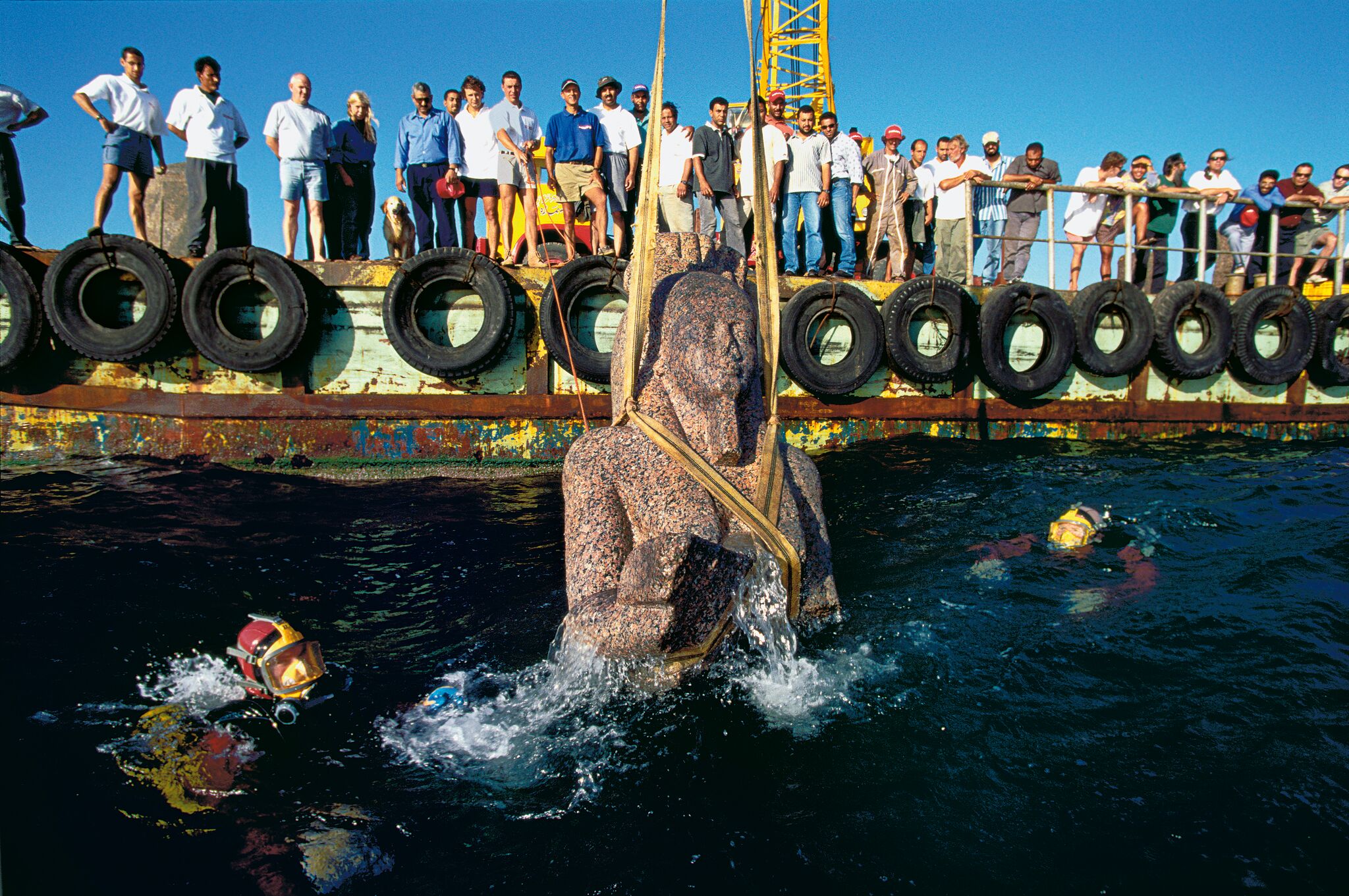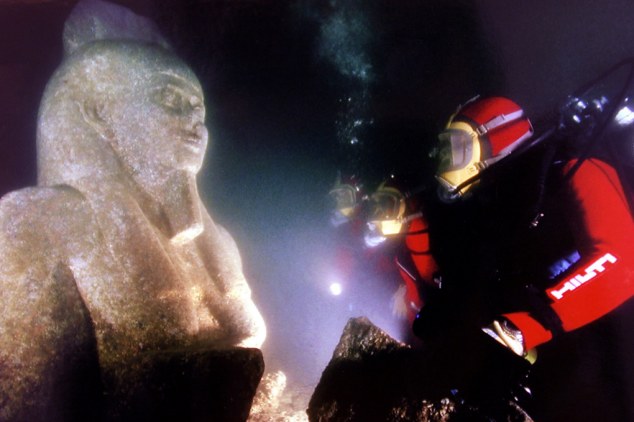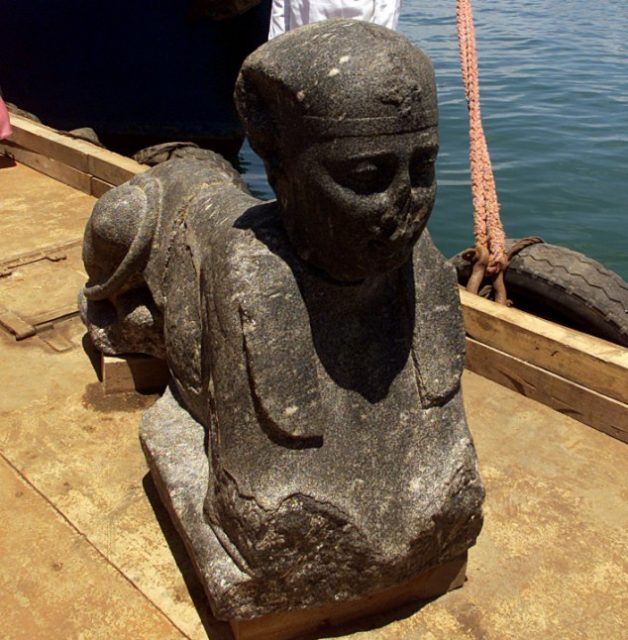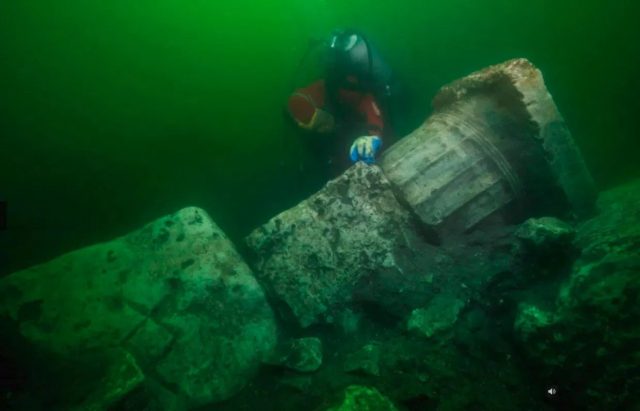 |
| Franck Goddio/Hilti Foundation |
Thonis Heracleion the Lost City: In 1987 maritime archeologist Franck Goddio founded the Institut Européen d’Archéologie Sous-Marine (The European Institute of Underwater Archaeology) in order to concentrate solely on underwater excavations.
He has found several important shipwrecks including the San Diego found in the waters of the Philippines and Napoleon Bonaparte’s flagship during his campaign in Egypt, the Orient.
His most important excavation to date is the discovery of the ancient sunken port city of Thonis Heracleion and parts of the city of Canopus in the Bay of Aboukir near Alexandria, Egypt. Partnered with the Egyptian Ministry for Antiquities, Goddio and his team have pulled some remarkable artifacts from the sea floor.
 |
| Thonis Heracleion: Franck Goddio/Hilti Foundation |
Prior to its discovery in 2000 no trace of Thonis-Heracleion had been found.
According to franckgoddio.org, an almost five hundred foot long wall of the temple was found as well as a gold plaque inscribed with Greek letters signifying that King Ptolemy III had erected a temple dedicated to Herakles.
Three huge statues made of pink granite representing a king, queen and Hapy, the god of fertility and abundance, were brought up and after examination the statues were measured at over sixteen feet tall and weighed over five tons.
Steles (tall inscribed pillars or tablets which usually indicated either directions, news of a pharaoh’s decree or odes to the gods) also made of pink granite were found with both Greek and Egyptian writings attesting to the idea that the two countries shared ideologies as well as trade.
A black granite stele ordered by Pharaoh Nectanebo I about 360BC was brought up and discovered to be almost identical to the stele of Naukratis in the Egyptian Museum of Cairo.
 |
| Franck Goddio/Hilti Foundation |
Several Doric columns from a Greek temple and coins, including one Byzantine gold from the 4th century, another bronze also from the 4th century were found along with a Byzantine earring.
Lead stone and bronze weights for measuring goods for taxes were also brought up and a dark stone statue of a woman wearing the tunic of the goddess Isis was found up to her neck in silt which was possibly Cleopatra as she identified so closely to Isis.
 |
| Franck Goddio/Hilti Foundation |
Additionally, hundreds of small statuettes of gods and Pharaohs, amulets, pottery shards and small vessels were discovered on the floor of the sea.
Before Alexandria became the center of trade in the Mediterranean area in 331BC, Thonis- Heracleion was a bustling port at the mouth of the River Nile where it meets the Mediterranean Sea as well as the location of an important temple, the Grand Temple of Amun de Gereb.